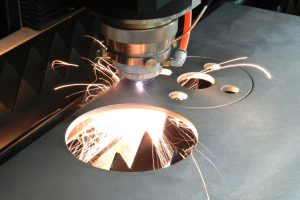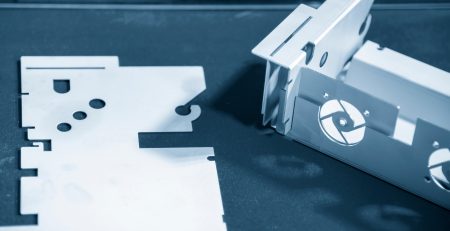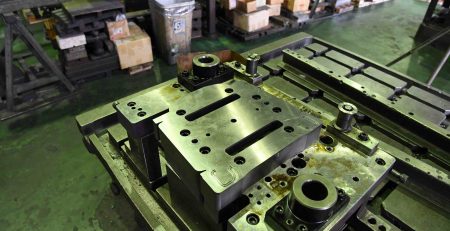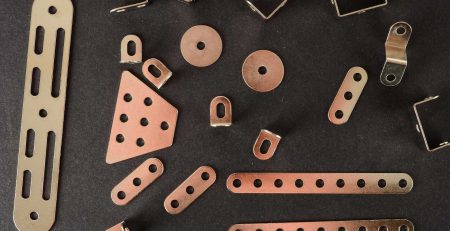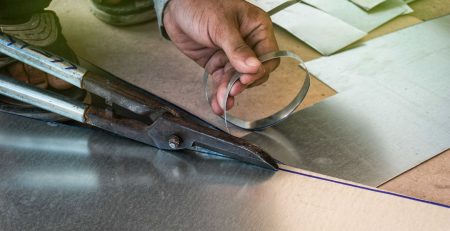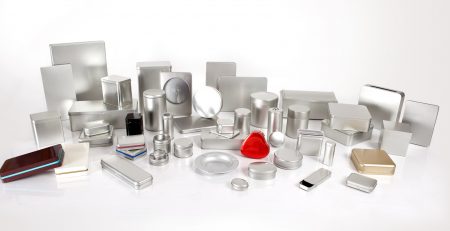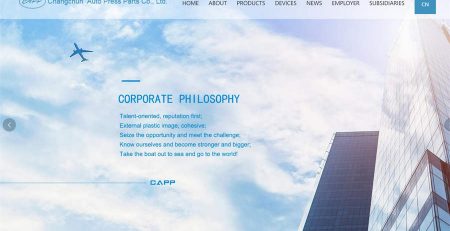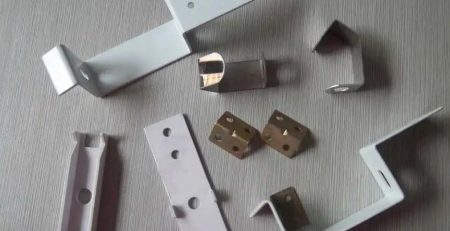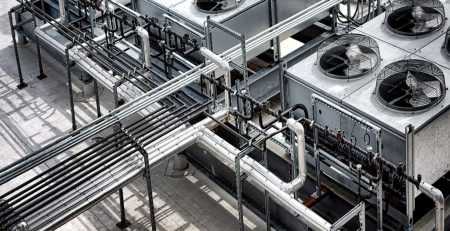Laser Cutting
The material to be cut is irradiated with a high-power density laser beam to quickly heat the material to vaporization temperature and evaporate to form a hole. As the beam moves on the material, the hole continuously forms a narrow slit to complete the cutting of the material.
Principle: Laser cutting is to irradiate the workpiece with a focused high-power density laser beam to quickly melt, vaporize, ablate or reach the ignition point of the irradiated material. At the same time, the molten material is blown away by the high-speed airflow coaxial with the beam to achieve the The workpiece is cut open. Laser cutting is one of the thermal cutting methods.
Classification
Laser vaporization cutting: Use a high-energy density laser beam to heat the workpiece, so that the temperature rises rapidly, reaching the boiling point of the material in a very short time, and the material begins to vaporize to form vapor. The jetting speed of these vapors is very high, and at the same time as the vapor jets, cuts are formed in the material. The heat of vaporization of materials is generally very large, so a lot of power and power density are required for laser vaporization and cutting.
Laser melting and cutting: When laser melting and cutting, the metal material is melted by laser heating, and then non-oxidizing gas (Ar, He, N, etc.) is sprayed through the nozzle coaxial with the beam, and the liquid metal is discharged by the strong pressure of the gas. Make an incision. Laser melting and cutting do not need to vaporize the metal completely, and the energy required is only 1/10 of that of vaporized cutting. Laser melting cutting is mainly used for cutting some materials that are not easy to oxidize or active metals, such as stainless steel, titanium, aluminum and their alloys.
Laser oxygen cutting: The principle of laser oxygen cutting is similar to oxyacetylene cutting. It uses a laser as a preheating heat source and an active gas such as oxygen as the cutting gas. On the one hand, the blown gas reacts with the cutting metal to cause oxidation reaction and release a large amount of oxidation heat; on the other hand, the molten oxide and melt are blown out of the reaction zone to form an incision in the metal. Since the oxidation reaction in the cutting process generates a lot of heat, the energy required for laser oxygen cutting is only 1/2 of the melting cutting, and the cutting speed is much faster than laser vaporization cutting and melting cutting. Laser oxygen cutting is mainly used for easily oxidized metal materials such as carbon steel, titanium steel and heat-treated steel.
Laser scribing and controlled fracture: Laser scribing uses a high-energy density laser to scan the surface of brittle materials, so that the material is heated to evaporate a small groove, and then a certain pressure is applied, and the brittle material will crack along the small groove. . The lasers used for laser scribing are generally Q-switched lasers and CO2 lasers. Controlled fracture is the use of the steep temperature distribution generated when the laser groove is carved, which generates local thermal stress in the brittle material, causing the material to break along the small groove.
Advantage:
- Small tolerance,
- Smooth surface,
- High efficiency,
- High speed,
- Environmental protection
Cutting material:
Steel: When oxygen is used as the processing gas, the cutting edge will be slightly oxidized. For plates with a thickness of 4mm, nitrogen can be used as a processing gas for high-pressure cutting. In this case, the cutting edge will not be oxidized. For plates with a thickness of more than 10mm, using a special pole plate for the laser and oiling the surface of the workpiece during processing can achieve better results.
Stainless steel: Oxygen can be used when oxidation of the cutting end surface is acceptable; nitrogen is used to obtain an oxidation-free and burr-free edge, and no further treatment is required. Coating the oil film on the surface of the plate will get better perforation effect without reducing the processing quality.
Aluminum: Despite its high reflectivity and thermal conductivity, aluminum with a thickness of 6mm or less can be cut, depending on the alloy type and laser capabilities. When cutting with oxygen, the cutting surface is rough and hard. When using nitrogen, the cutting surface is smooth. Pure aluminum is very difficult to cut because of its high purity. Aluminum can only be cut when a “reflection absorption” device is installed on the system. Otherwise, the reflection will destroy the optical components.
Copper: Both materials have high reflectivity and very good thermal conductivity. Brass with thickness less than 1mm can be cut with nitrogen; copper with thickness less than 2mm can be cut, and the processing gas must be oxygen. Copper and brass can only be cut when a “reflection absorption” device is installed on the system. Otherwise, the reflection will destroy the optical components.

